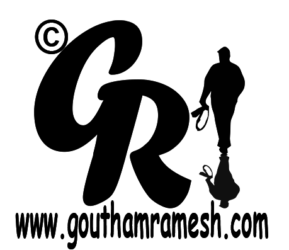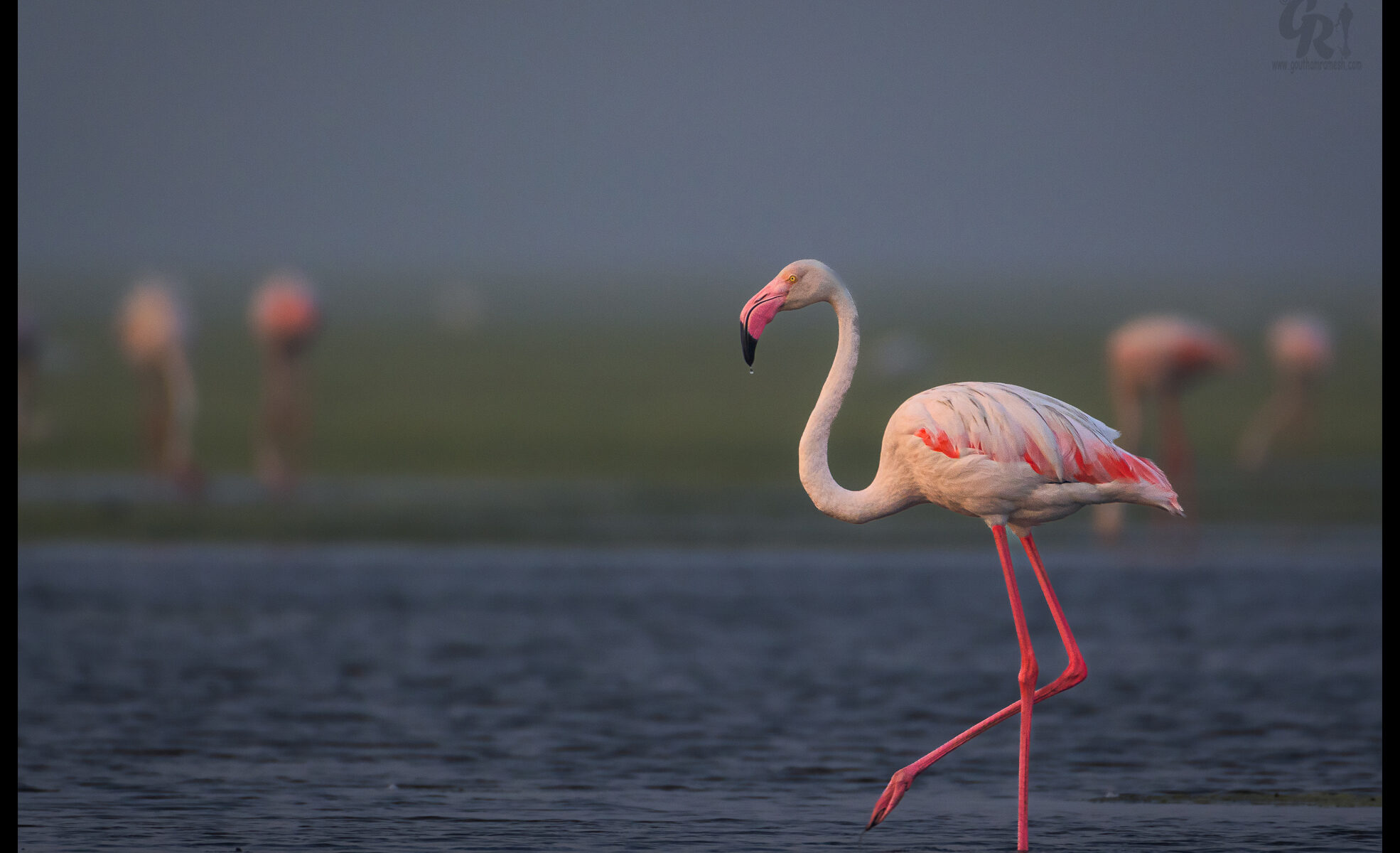Pulicat Lagoon is the second largest brackish water lagoon in India, after Chilika Lake. Pulicat Lagoon or Pulicat Lake on the East Coast of India is located 60 kilometres north of Chennai City, in Nellore District of Andhra Pradesh.
In this blog , I will share some pictures of birds shot from this beautiful Lagoon and the Lagoon itself
The lagoon comprises of the following regions, Pulicat Lake in Tamil Nadu & Andhra Pradesh, Marshy Wetland Land Region of Andhra Pradesh, Venadu Reserve Forest of Andhra Pradesh and Pernadu Reserve Forest of Andhra Pradesh. The lagoon is divided in the middle by Sriharikota Link Road, The barrier island of Sriharikota home to the Satish Dhawan Space Centre, ISRO separates the lagoon from the Bay of Bengal.
How to reach.
Pulicat is located 54 km away from Chennai. It can be reached in 1 hour 20 minutes. There are 2 routes to reach Pulicat. One can opt to drive via SH104. On this route, one has to follow Sydenhams Rd, Elephant Gate St and Basin Bridge Rd to Erukkancheri High Rd/Grand Northern Trunk Rd in Vasuki Nagar. From there on, you can continue onto Erukkancheri High Rd/Grand Northern Trunk Rd, 100 Feet Rd and SH 104 to Pulicat. The other route involves driving via SH 56 and SH 104.
Where to Stay
There are very options to stay at Pulicat , however if you need a comfortable stay look for hotels in Gummidipoondi / Ponneri ( 1 hr drive from Pulicat )
Hiring a Boat
I strongly recommend @pulicatlakeboating for anyone wanting to shoot Birds in Pulicat lake. Luke and his son Franklin are experts in tracking birds and are one of the finest you can hire.
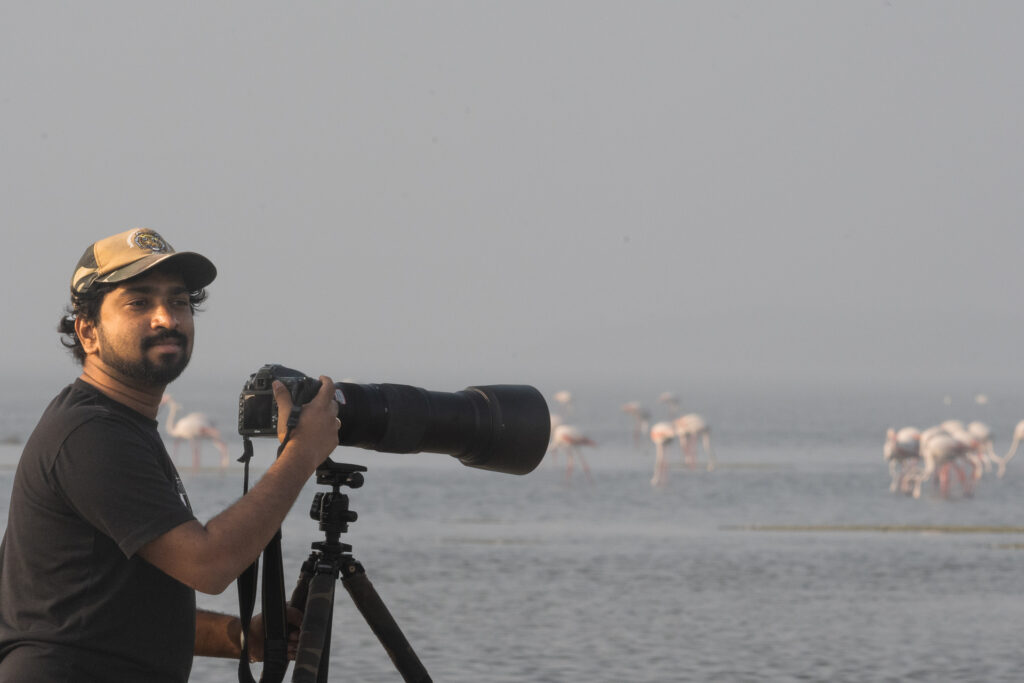
Best Time to Visit
The best time to visit Pulicat Lake Bird Sanctuary is between October to March. The temperature is mild and pleasant and makes travelling to the area easy. This is also the best time to observe the migratory birds and especially the flamingos.
Some Shots
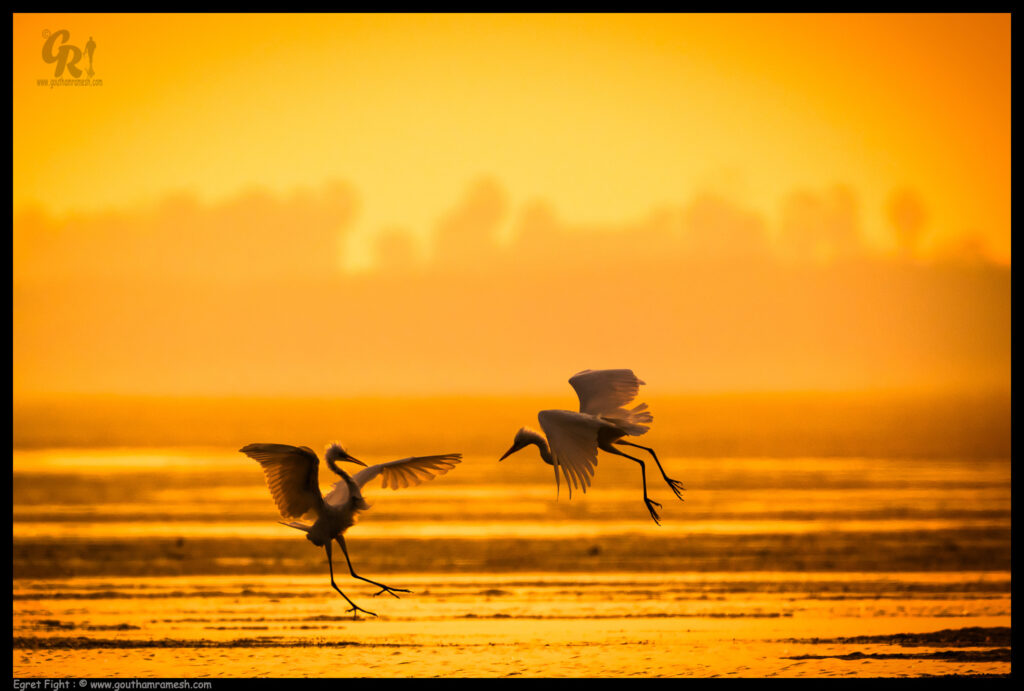
Exposure: F5.6 1/4000 , ISO 400 , Natural Sunlight.
Grear:
Nikon Zfc
Nikkor VR 200-500mm F5.6ED + 1.4 TC
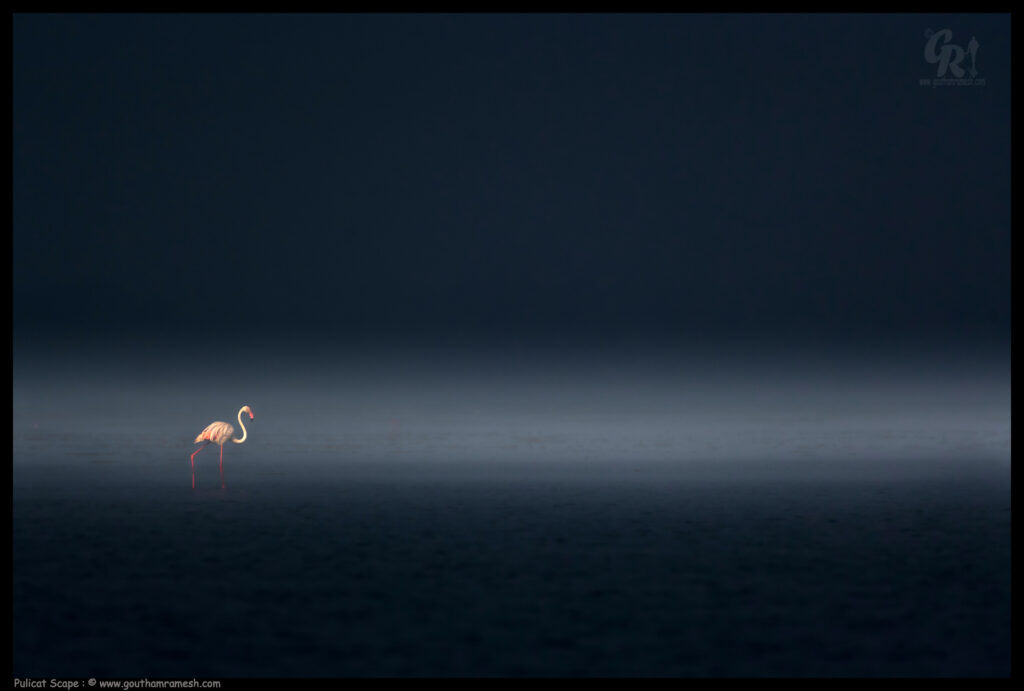
Our eye is the best camera , however we take and whatever we use .. sometimes in hazy conditions we can’t get what our eye sees.
I tried to selectively process mist using layered mist to create a almost surreal yet natural looking pulicat scape with a distant flamingo.
Exposure: F8 1/2000 , ISO 800 , Natural Sunlight.
PP: Selective processing for mist /fog
Grear:
Nikon Zfc
Nikkor VR 200-500mm F5.6ED + 1.4 TC
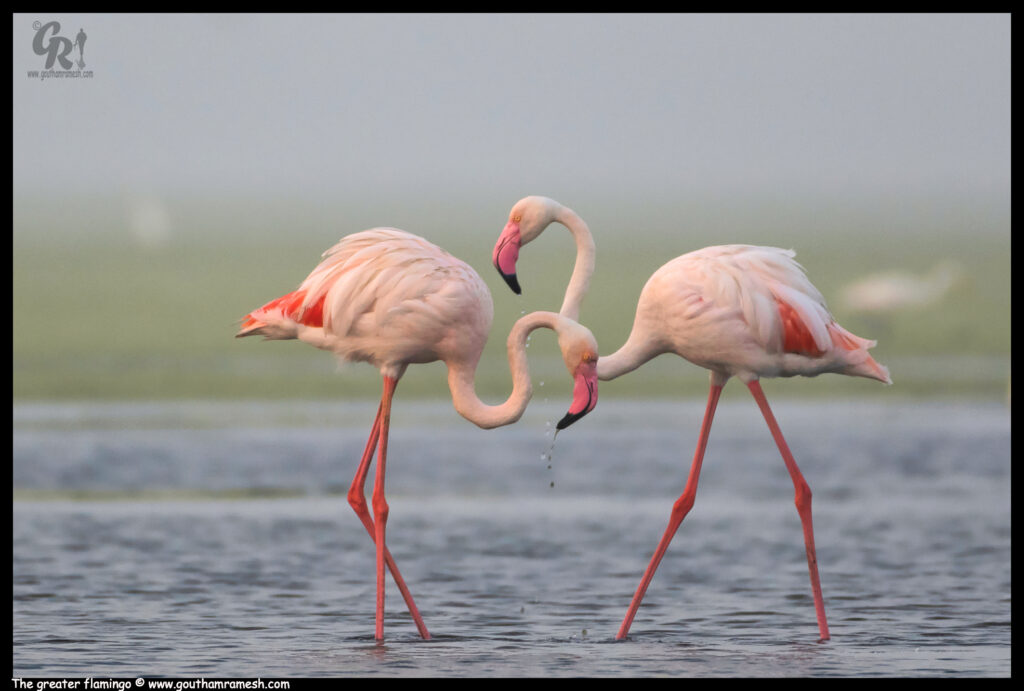
The greater flamingo is the most widespread and largest species of the flamingo family. It is found in Africa, the Indian subcontinent, the Middle East, and in southern Europe
Exposure: F8 1/320 , ISO 800 , Natural Sunlight.
Grear:
Nikon Zfc
Nikkor VR 200-500mm F5.6E with 1.4 TC

This is the main attraction in pulicat … these are magnificent and graceful birds .. they have inspired a ballet and many dance forms
Exposure: F8 1/400 , ISO 800 , Natural Sunlight.
Grear:
Nikon Zfc
Nikkor VR 200-500mm F5.6ED with 1.4x TC
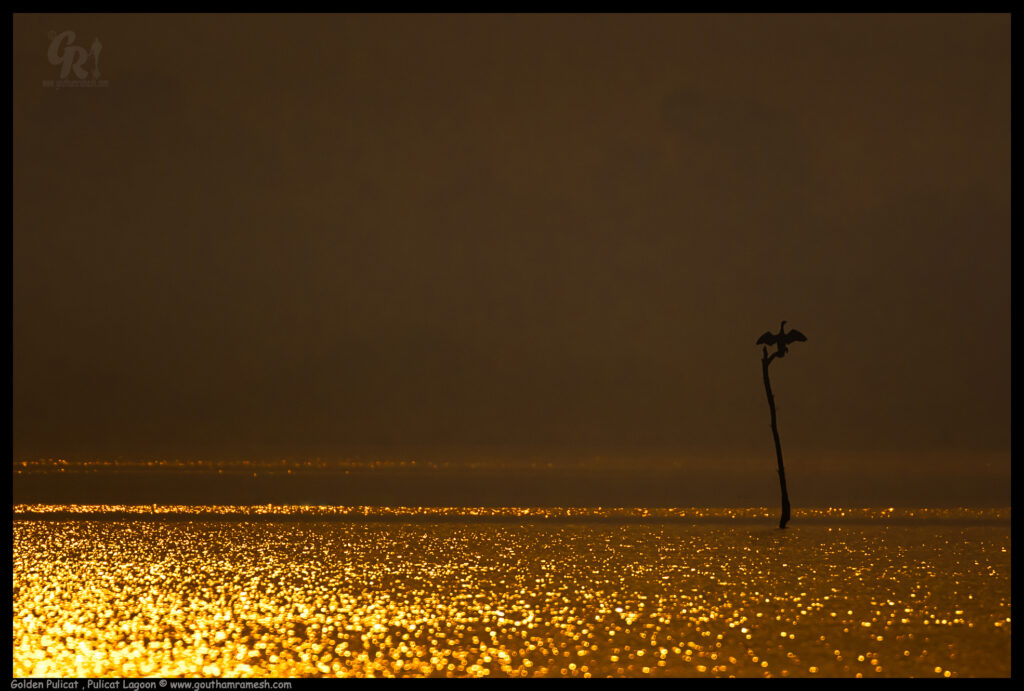
Golden Pulicat
Sun set is special in pulicat .. with golden hues of setting sun lighting up water … and what a way to show with a distant cormorant basking
Exposure: F8 1/4000 , ISO 800 , Natural Sunlight.
Grear:
Nikon Zfc
Nikkor VR 200-500mm F5.6E + 1.4x TC
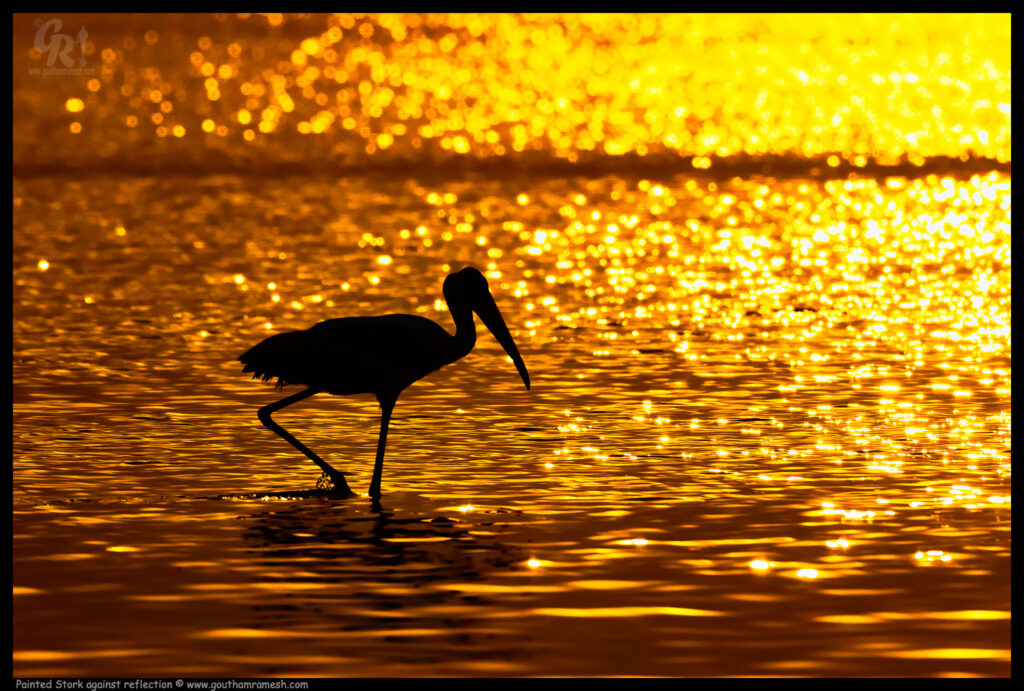
Exposure: F8 1/4000 , ISO 800 , Natural Sunlight.
Grear:
Nikon Zfc
Nikkor VR 200-500mm F5.6ED
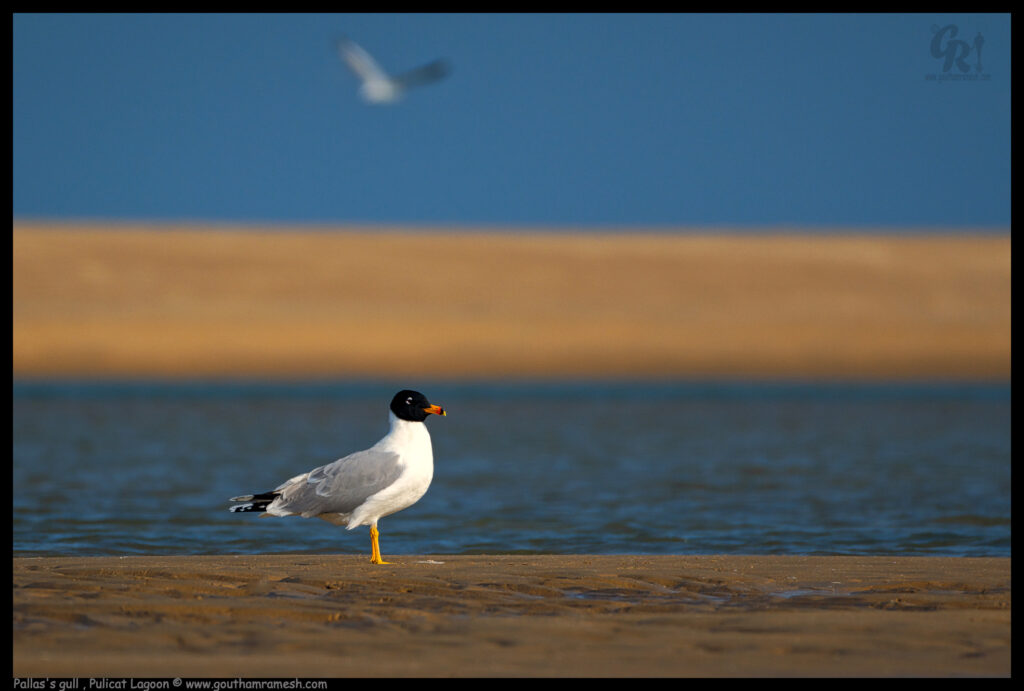
Pallas’s gull (Ichthyaetus ichthyaetus), also known as the great black-headed gull, is a large bird species.
This species breeds in colonies in marshes and islands from southern Russia to Mongolia. It is migratory, wintering in the eastern Mediterranean, Arabia and India. This gull nests on the ground, laying between two and four eggs.
Exposure: F5.6 1/2000 , ISO 400 , Natural Sunlight.
Grear:
Nikon Zfc
Nikkor VR 200-500mm F5.6E
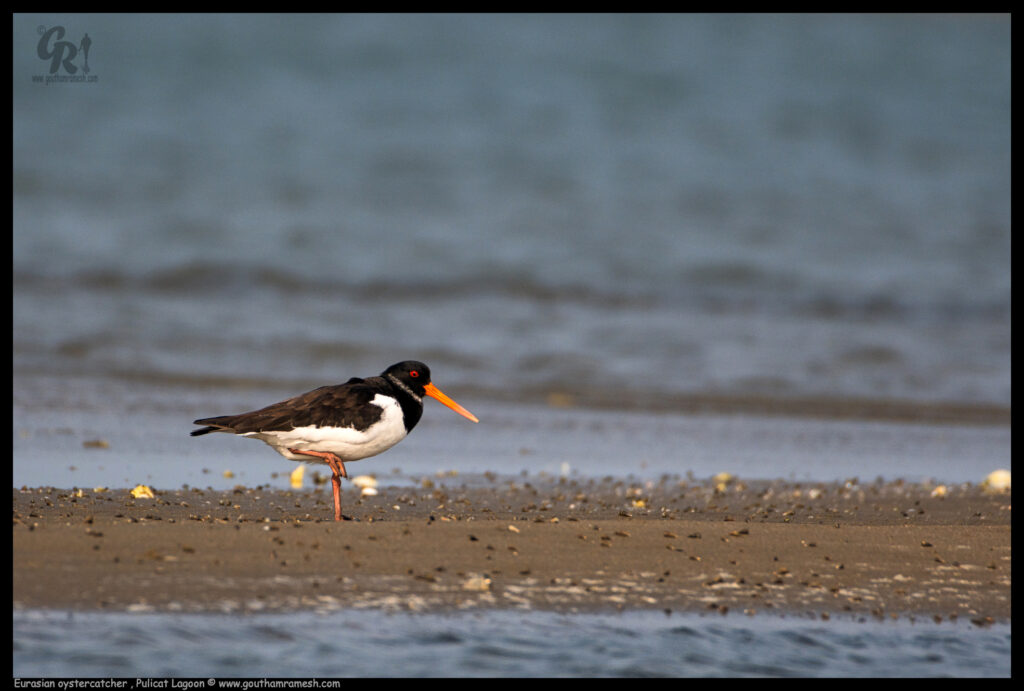
The Eurasian oystercatcher (Haematopus ostralegus) also known as the common pied oystercatcher, or palaearctic oystercatcher, or (in Europe) just oystercatcher, is a wader in the oystercatcher bird family Haematopodidae
Exposure: F0 1/250 , ISO 400 , Natural Sunlight.
Grear:
Nikon Zfc
Nikkor VR 200-500mm F5.6E + 1.4x TC

The lesser crested tern (Thalasseus bengalensis)is a tern in the family, Laridae. It breeds in subtropical coastal parts of the world mainly from the Red Sea across the Indian Ocean to the western Pacific, and Australia, with a significant population on the southern coast of the Mediterranean on two islands off the Libyan coast. Accidental breeding has also been reported in Italy and France. The Australian birds are probably sedentary, but other populations are migratory, wintering south to South Africa.
Exposure: F10 1/640 , ISO 200 , Natural Sunlight.
Grear:
Nikon Zfc
Nikkor VR 200-500mm F5.6E
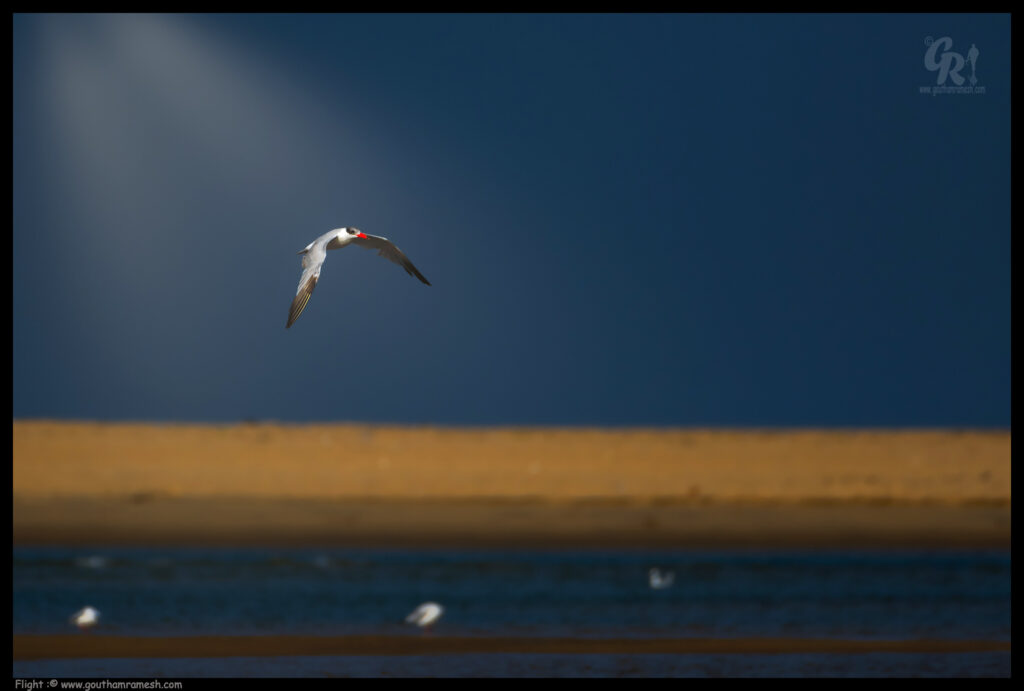
Love shooting and creating scapes to show minimalist surrealism
PP: Selective processing for sunrays
Grear:
Nikon Zfc
Nikkor VR 200-500mm F5.6ED + 1.4 TC
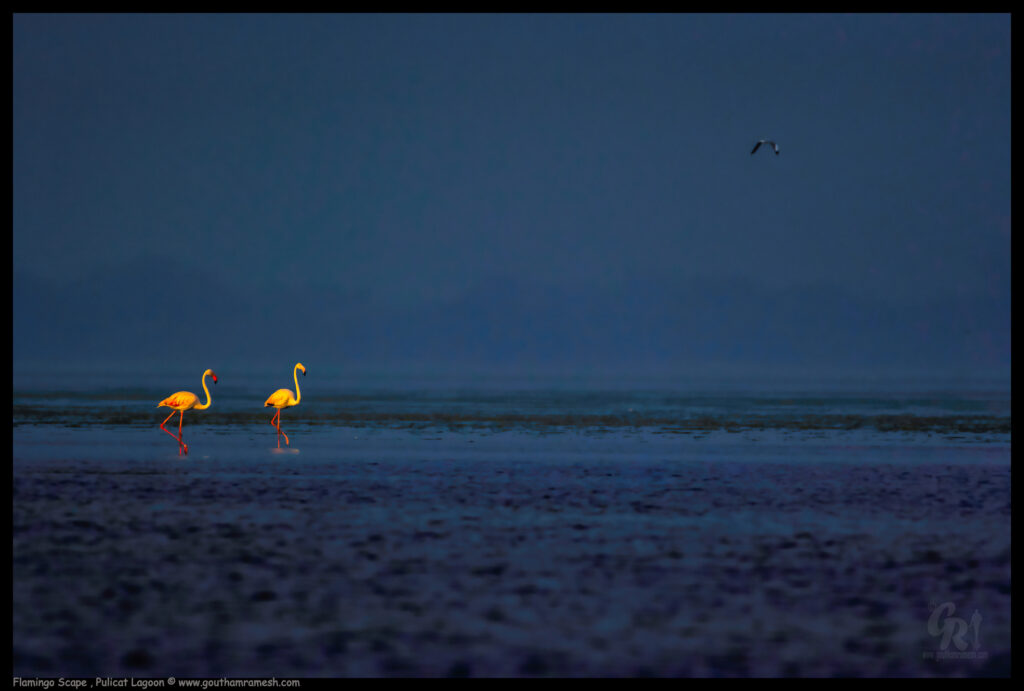
Exposure: F8 1/2000 , ISO 800 , Natural Sunlight.
Grear:
Nikon Zfc
Nikkor VR 200-500mm F5.6E + 1.4x TC
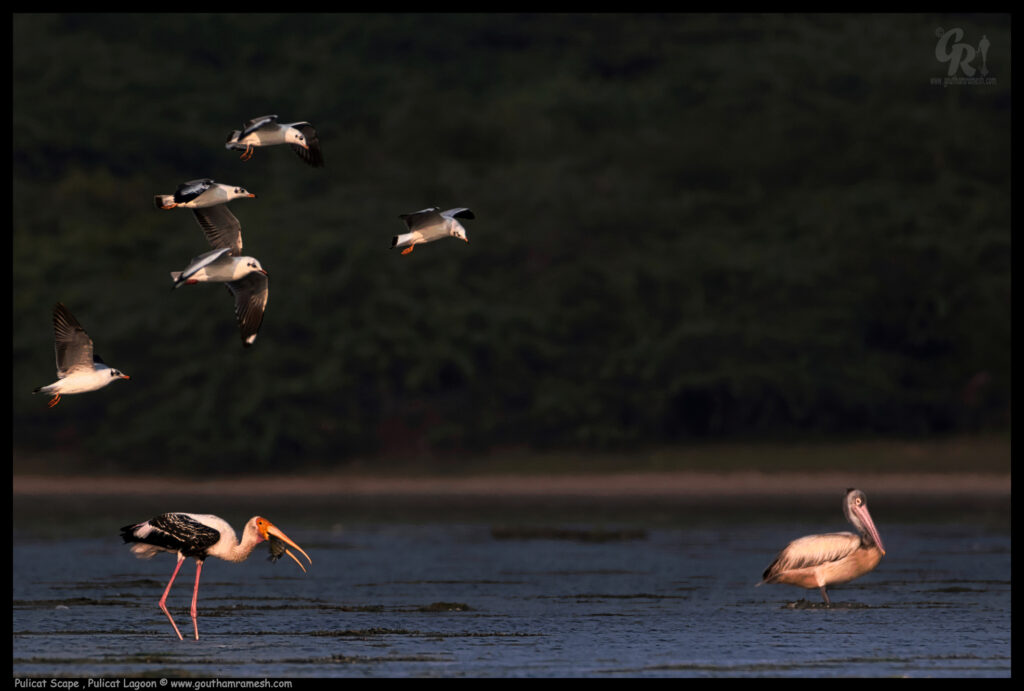
This is a typical activity in a lagoon as sun goes down . PS : This is as shot not a composite 🙂
1. Painted Stork with Fish
2. Lesser terns mobbing it
3. Pelican is checking what’s the commotion
Exposure: F8 1/500 , ISO 400 , Natural Sunlight.
Grear:
Nikon Zfc
Nikkor VR 200-500mm F5.6E + 1.4x TC
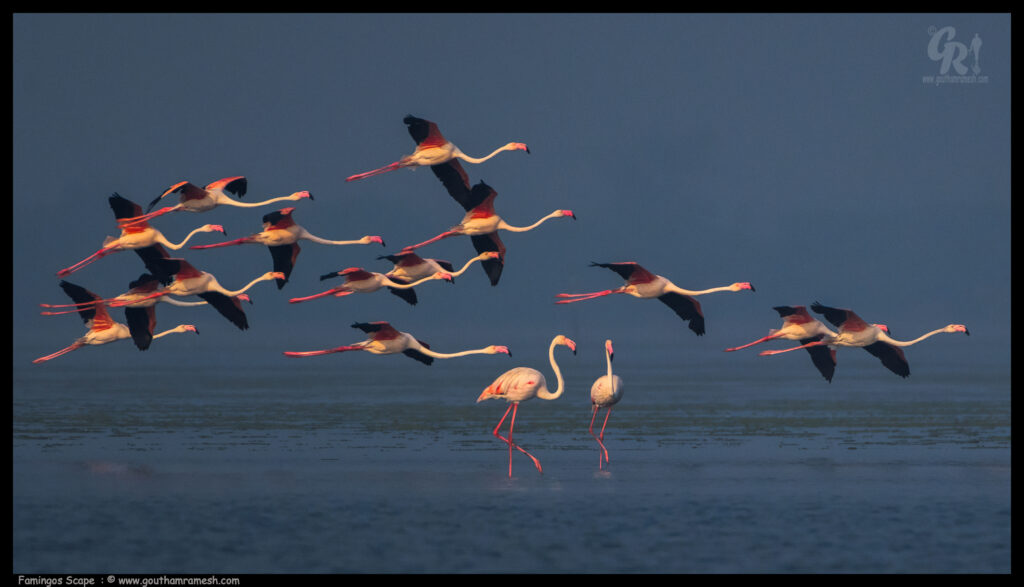
xposure: F8 1/2000 , ISO 800 , Natural Sunlight.
Grear:
Nikon Zfc
Nikkor VR 200-500mm F5.6E + 1.4x TC
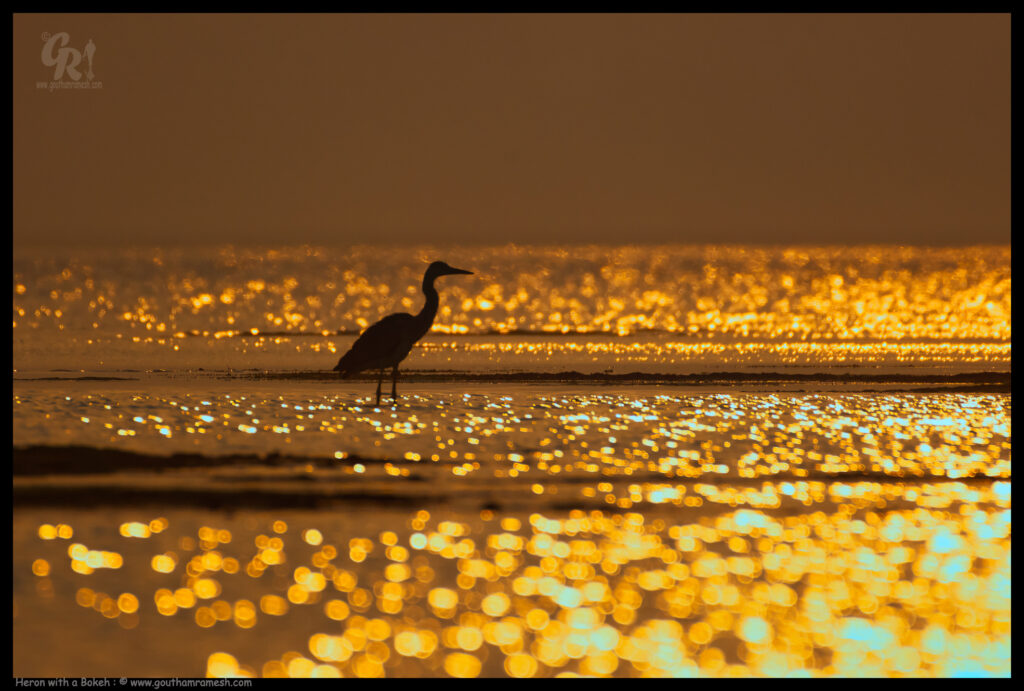
A good photograph is not just about subject , its about other elements too.. Bokeh is one such element .. use it to create pleasing images.
Read more about bokeh in my blog https://gouthamramesh.com/bokeh/
Grear:
Nikon Zfc
Nikkor VR 200-500mm F5.6ED + 1.4 TC
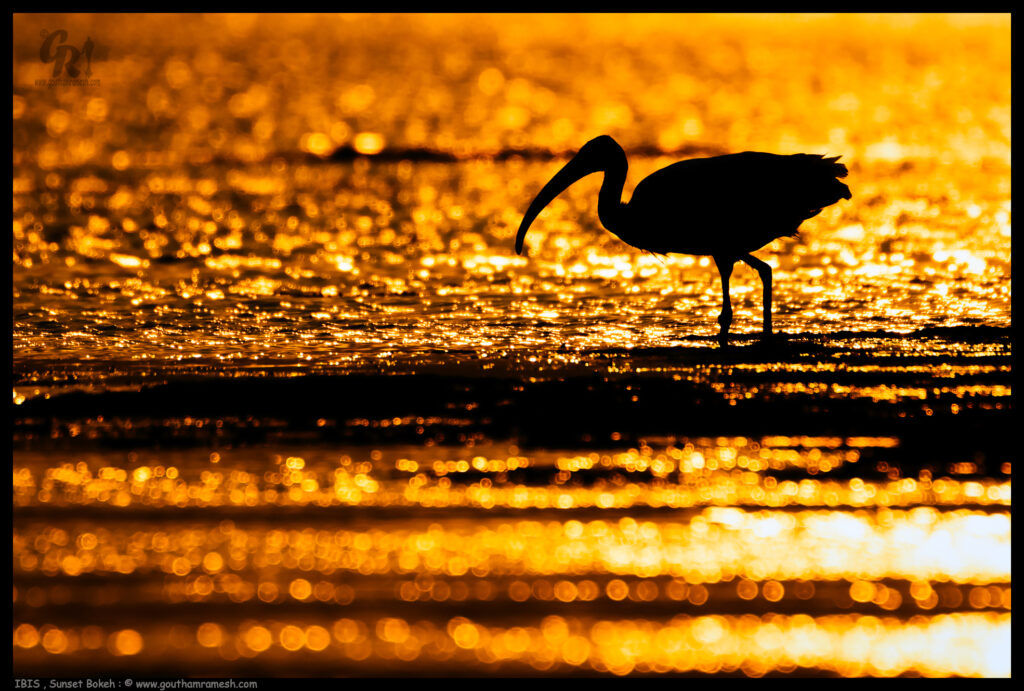
Pulicat gives you an opportunity to shoot birds almost at eye level and when you shoot a silhouette of a bird against the reflection of setting sun … you can see bokeh…
Exposure: F8 1/4000 , ISO 400 , Natural Sunlight.
Grear:
Nikon Zfc
Nikkor VR 200-500mm F5.6ED + 1.4 TC
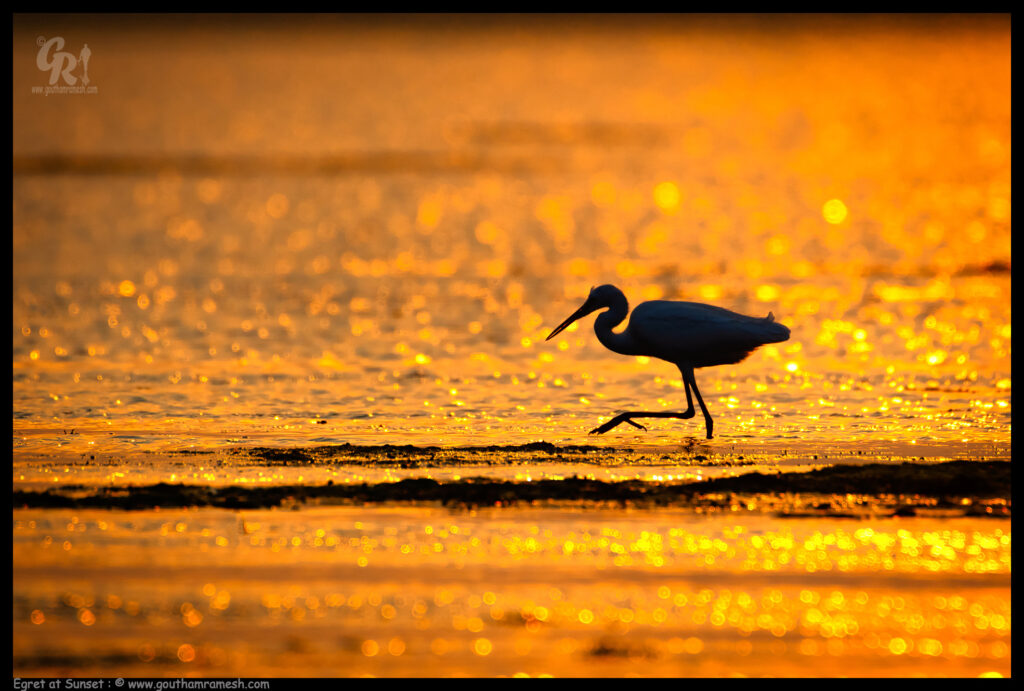
Exposure: F8 1/2000 , ISO 400 , Natural Sunlight.
Grear:
Nikon Zfc
Nikkor VR 200-500mm F5.6E with 1.4 TC

Pulicat is a paradise ,, fog in the morning can be an issue for ppl who want to shoot flamingoes .. but with certain through process you can shoot landscapes by playing with white balance
Exposure: F8 1/3200 , ISO 400 , Natural Sunlight.
Grear:
Nikon Zfc
Nikkor VR 200-500mm F5.6E

The brown-headed gull (Chroicocephalus brunnicephalus) is a small gull which breeds in the high plateaus of central Asia from Tajikistan to Ordos in Inner Mongolia. It is migratory, wintering on the coasts and large inland lakes of the Indian Subcontinent.
Exposure: F5.6 1/1000 , ISO 200 , Natural Sunlight.
Grear:
Nikon Zfc
Nikkor VR 200-500mm F5.6E

The Caspian tern is a species of tern, with a sub cosmopolitan but scattered distribution. Despite its extensive range, it is monotypic of its genus, and has no accepted subspecies.
Exposure: F8 1/2500 , ISO 400 , Natural Sunlight.
Grear:
Nikon Zfc
Nikkor VR 200-500mm F5.6ED
Thanks if you like the blog, you can leave a comment at Home Page
Cheers

